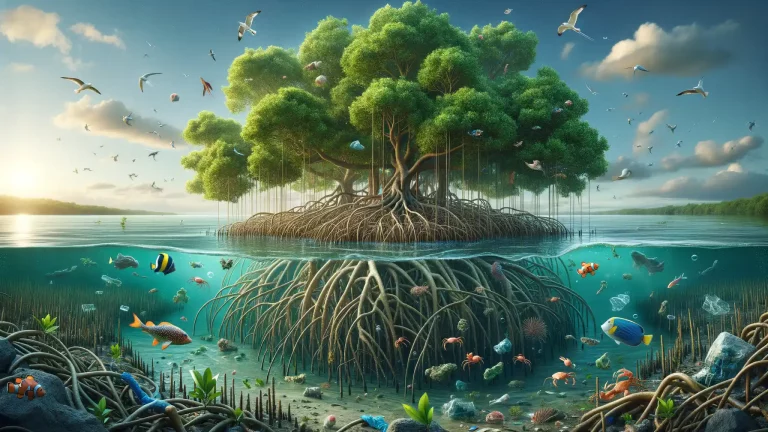Introduction to Mangroves and Their Role in Ecosystems
What Are Mangroves, Really?
Imagine a tree with roots that seem to tiptoe on water, straddling the line between land and sea. That’s exactly what mangroves are: nature’s incredible multitaskers. Growing in salty, muddy environments where most plants would call it quits, they create a world entirely their own. Picture this—tangled roots that stretch like fingers into the shallows, creating a safe haven for crabs, fish, and even baby sharks!
But mangroves aren’t just trees; they’re lifelines. These coastal forests shield shores from fierce waves like a natural barricade, saving countless communities from storm surges. And their contribution doesn’t stop at protection. They act like sponges, absorbing carbon dioxide and turning the tide in the fight against climate change.
Why Mangroves Matter More Than You Think
Not all heroes wear capes; some simply grow in salty soil. These unique ecosystems:
- Trap sediments: Mangroves keep muddy waters from choking coral reefs.
- Provide homes: Everything—from shrimp to migratory birds—relies on these wetlands.
- Support livelihoods: From fishing to honey collection, locals depend on them directly.
Mangroves are so much more than a cluster of trees—they’re defenders, nurturers, and architects of thriving coasts.
Ecological Benefits of Mangroves
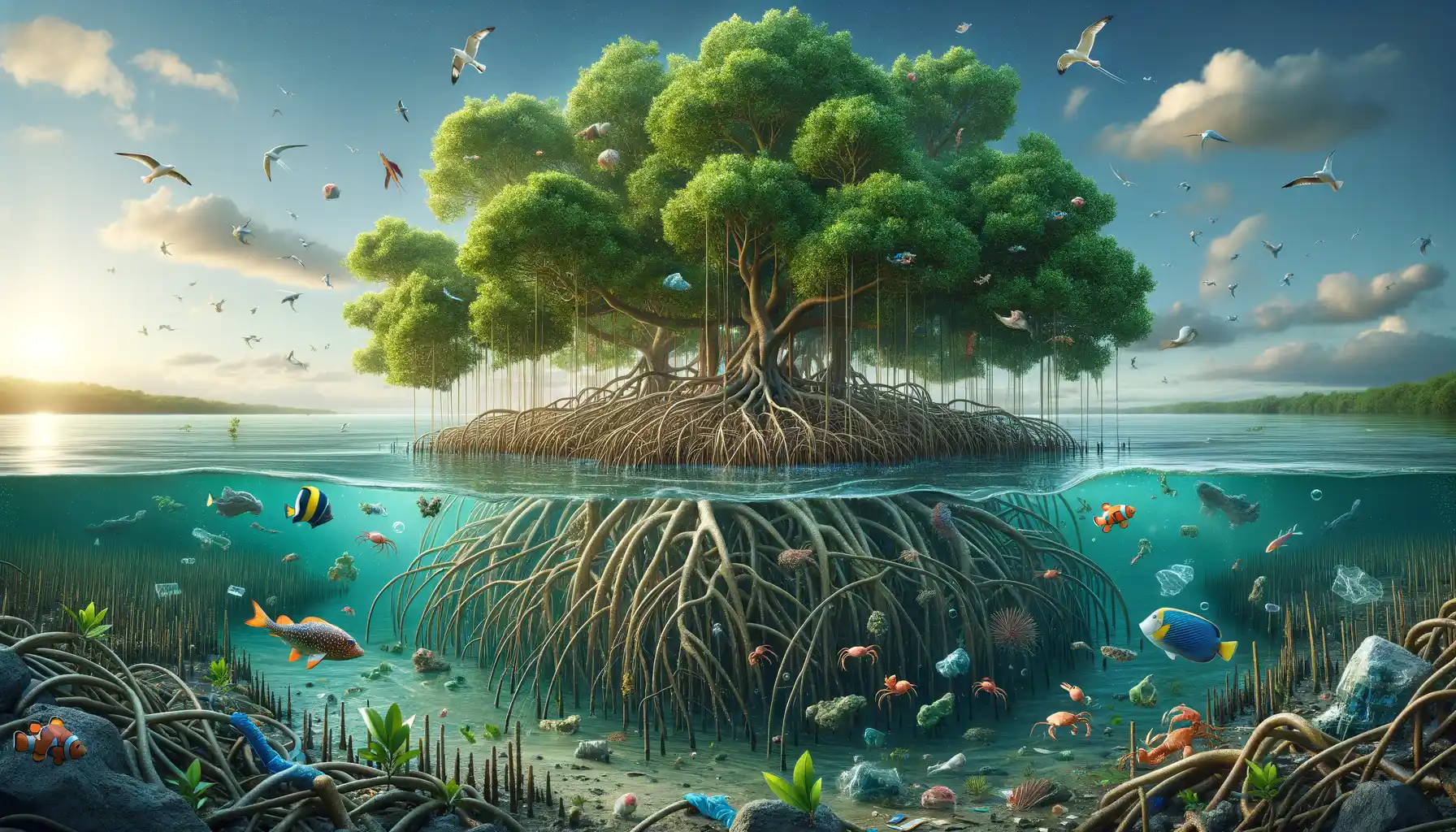
The Unsung Heroes of Coastal Protection
Mangroves are nature’s quiet warriors, standing guard where land meets sea. These unique trees and shrubs are more than just plants; they’re lifelines for our planet. One of their superpowers? Acting as a natural shield. Picture this: their intricate root systems form tangled walls that slow down storm surges and waves, reducing coastal erosion and protecting communities from catastrophic floods. Without these green defenders, many coastal towns would be far more vulnerable to nature’s fury.
But mangroves don’t just stop at defense—they’re incredibly generous too. Their submerged roots are nurseries for marine life, housing everything from baby fish to crustaceans. Imagine tiny creatures hiding among the roots, finding safety and food until they’re strong enough to swim into open waters. In fact, over 70% of tropical fish species depend on mangroves at some life stage.
Guardians of Global Climate Balance
Let’s talk about their role in battling climate change. Mangroves act like giant sponges, soaking up and storing carbon dioxide—a lot of it! Here’s a fun fact: per square meter, mangroves can sequester up to four times more carbon than rainforests.
And it doesn’t end there. Check out some of their planet-saving magic:
- They trap sediments, keeping coral reefs healthy and alive by preventing suffocation from silt.
- They filter pollutants from water, ensuring cleaner oceans and happier marine ecosystems.
Think of mangroves as nature’s multitaskers—cleaning, protecting, and nurturing life, all without asking for anything in return. A little gratitude for these ecological champions goes a long way!
Economic and Social Importance of Mangroves
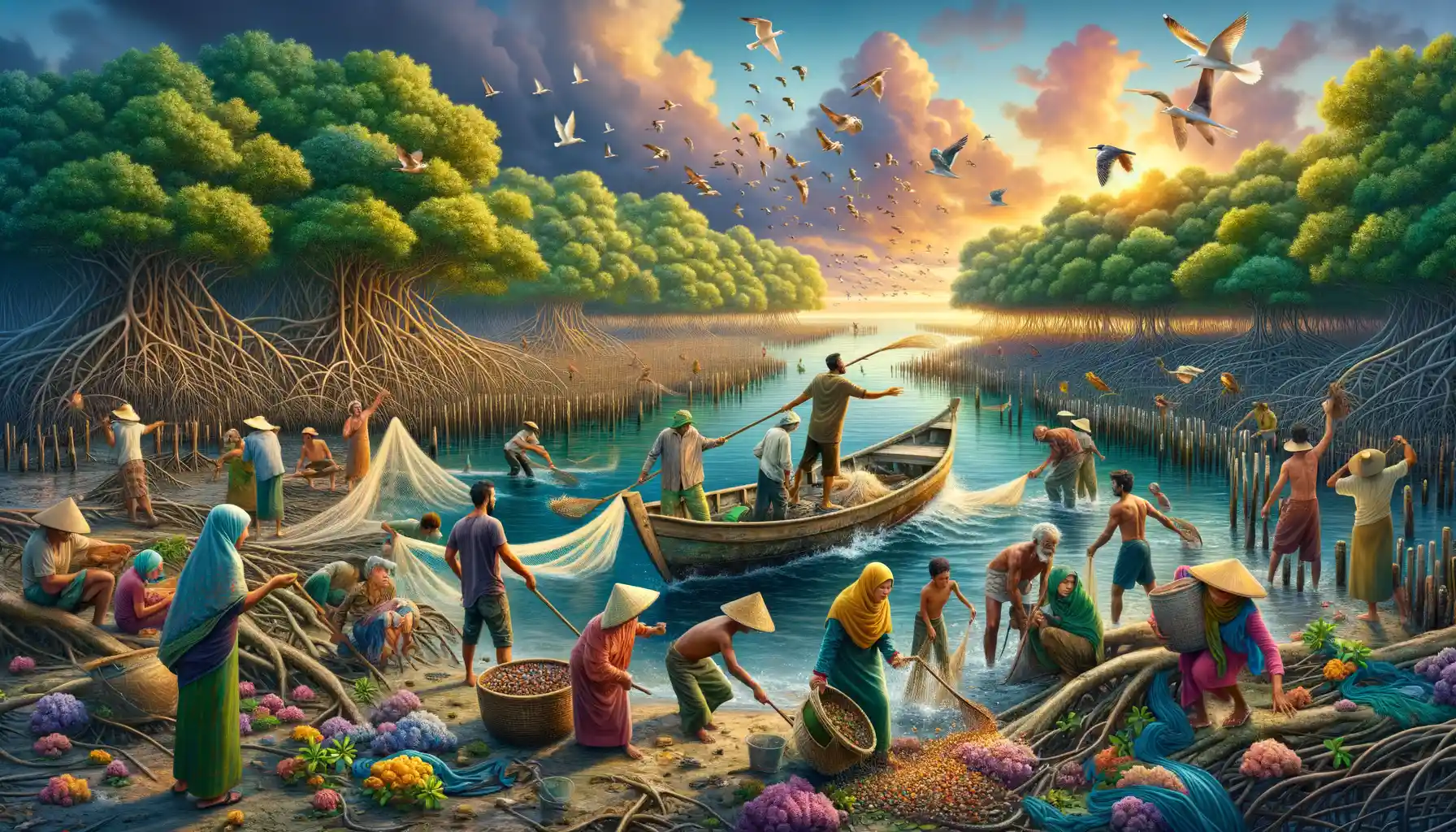
Boosting Coastal Livelihoods and Beyond
Imagine a forest that not only protects you from storms but also fills your basket with fish to sell at the market. That’s the magic of mangroves! These coastal guardians fuel local economies by supporting fisheries, tourism, and even honey production. Many small communities depend on them for their daily bread—and not just figuratively. Think about families who fish in mangrove waters or gather crabs and shrimps; without these incredible ecosystems, they’d lose their livelihoods.
The benefits ripple far beyond the coast, too. Mangroves act as carbon vaults, storing up to 10 times more carbon than terrestrial forests. This makes them key allies in fighting climate change—a global issue with very real socioeconomic costs. So, protecting mangroves doesn’t just help a small village; it’s a step toward securing our planet’s future.
Natural Storm Shields with High ROI
What’s the price of safety? For coastal communities, mangroves are a living insurance policy. These resilient forests reduce storm surges, block deadly winds, and stop erosion—saving governments billions annually in disaster recovery.
And let’s not forget their contribution to eco-tourism. Whether it’s kayaking through mangrove tunnels or birdwatching amidst vibrant flocks, these habitats draw visitors seeking raw natural beauty. Some quick economic highlights:
- Storm protection: Billions saved in damages every year
- Tourism earnings: Mangrove ecotourism generates income for local economies
- Carbon markets: Mangroves’ carbon-storing abilities make them valuable in sustainability projects
From shielding fishermen to delighting eco-travelers, mangroves prove time and time again that nature pays back every cent we invest—and then some.
Threats to Mangrove Forests
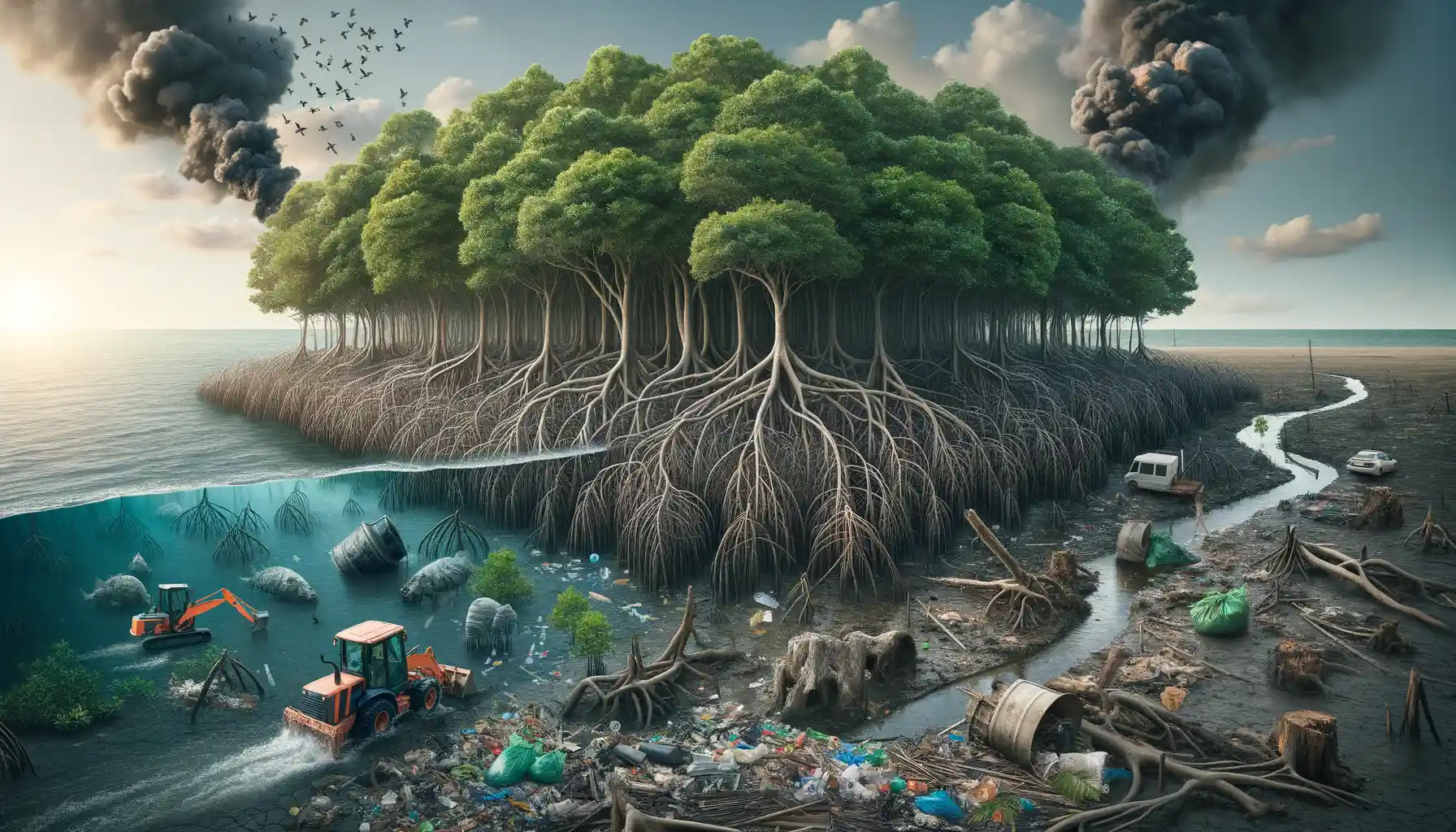
The Encroaching Shadows: What’s Putting Mangroves at Risk?
Picture a delicate fortress rising from the tidal waters, its sprawling roots clutching the earth like a protective embrace. Now imagine cracks in this fortress—wounds inflicted by human hands and shifting climates. The threats to mangrove forests aren’t just distant headlines; they’re a creeping reality.
One glaring culprit? Coastal development. From luxury resorts to ports and shrimp farms, humanity has often bulldozed these remarkable habitats for profit. And let’s not forget pollution—the silent infiltrator. Toxic waste, plastic trash, oil spills—they seep into mangrove ecosystems, poisoning life at every level.
Then there’s the ever-looming threat of climate change, a double-edged sword. Rising sea levels drown mangrove roots, while extreme weather can uproot entire forests. Ironically, these trees protect us from storms but bear the brunt of intensifying hurricanes themselves.
Other culprits include:
It’s heartbreaking: the very forests acting as our planet’s defenders are being pushed past their breaking point by our own actions. Will we choose to listen before it’s too late?
Strategies for Mangrove Conservation and Restoration
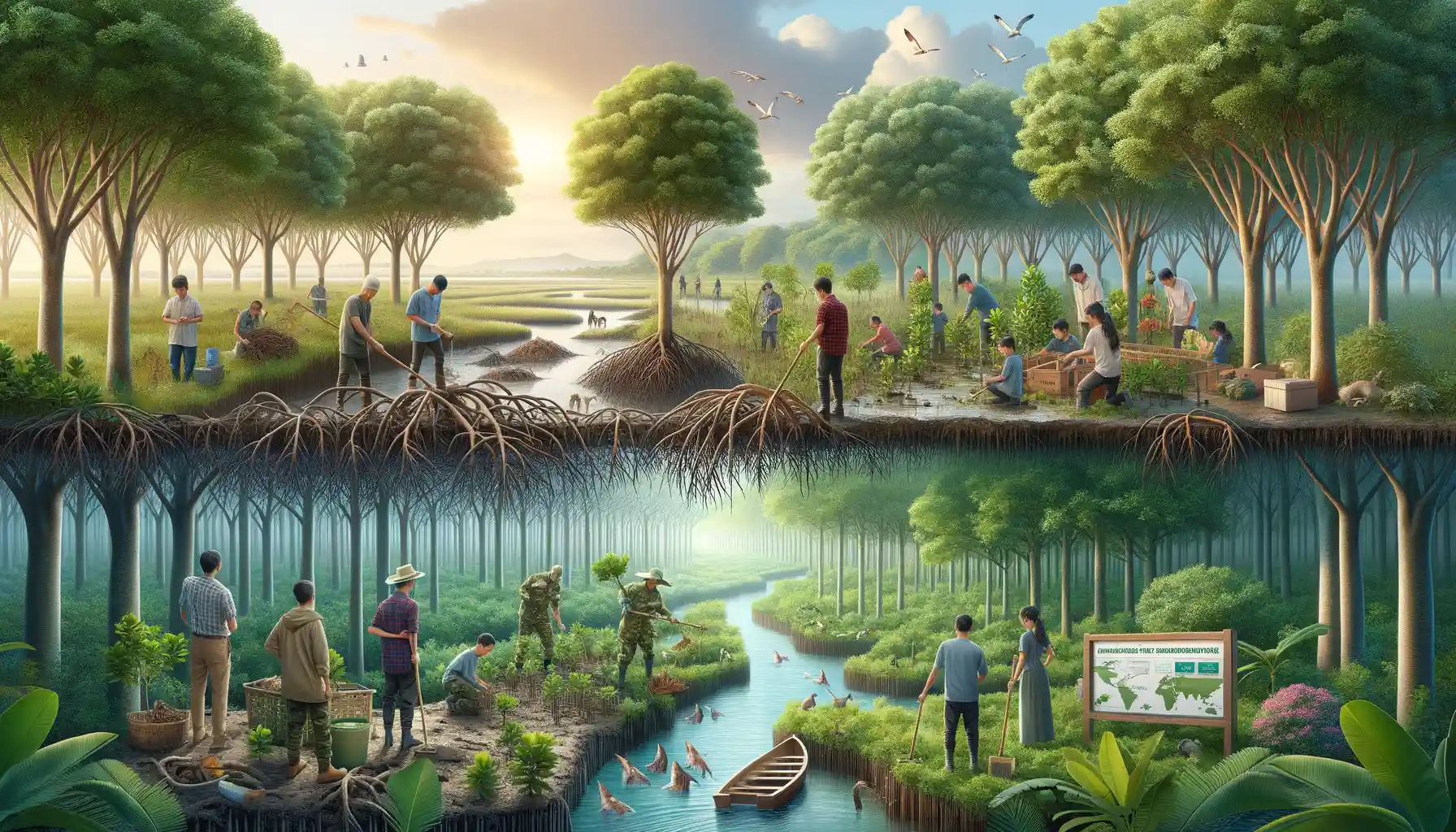
Protecting Mangroves: Small Steps, Big Impact
Imagine standing on a coastline, the salty breeze in your hair. Now picture losing these lush green guardians—yes, mangroves—to rising tides and human indifference. Scary, right? But here’s the twist: we can flip this narrative. By adopting smart strategies and rolling up our sleeves, together we can save these vital ecosystems.
One game-changing approach is restoring degraded mangrove areas. This isn’t just about planting seedlings—it’s about understanding nature’s rhythm. For instance, it’s critical to match the right species of mangroves to the specific tidal zone where they thrive. A mismatch could be like trying to grow roses in a desert!
- Community involvement: Empowering locals with knowledge and resources fosters a sense of ownership. When villagers know mangroves shield their homes from storms, conservation becomes urgent and personal.
- Policy enforcement: Without laws that pack a punch, efforts fall flat. Governments must act with conviction—think strict fishing regulations and penalties for illegal logging.
Technology Meets Nature: A Winning Duo
Did you know drones are becoming mangrove heroes? These flying marvels help map damaged forests and pinpoint where restoration is most needed. Likewise, satellite imaging tracks changes in mangrove coverage over time. Pair this with grassroots efforts, and it’s a recipe for success.
And let’s not forget the power of rethinking waste management. Polluted waters choke mangroves to death—literally! By managing plastic use and cleaning waterways, we’re giving mangroves a much-needed lifeline.

